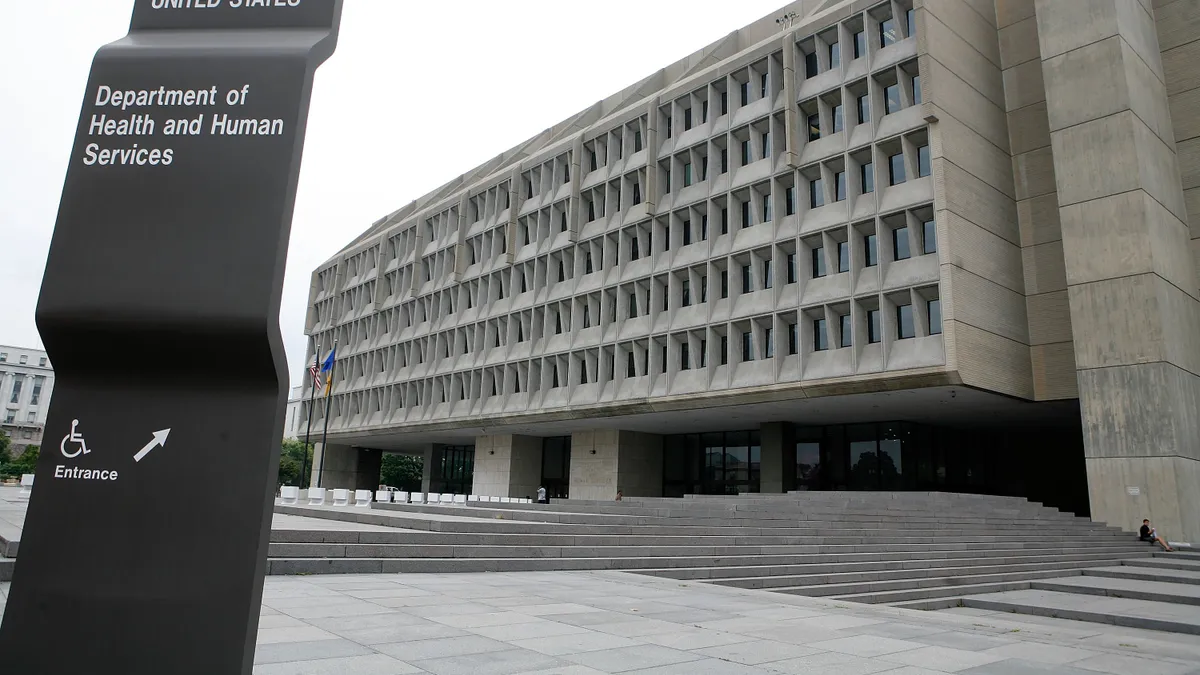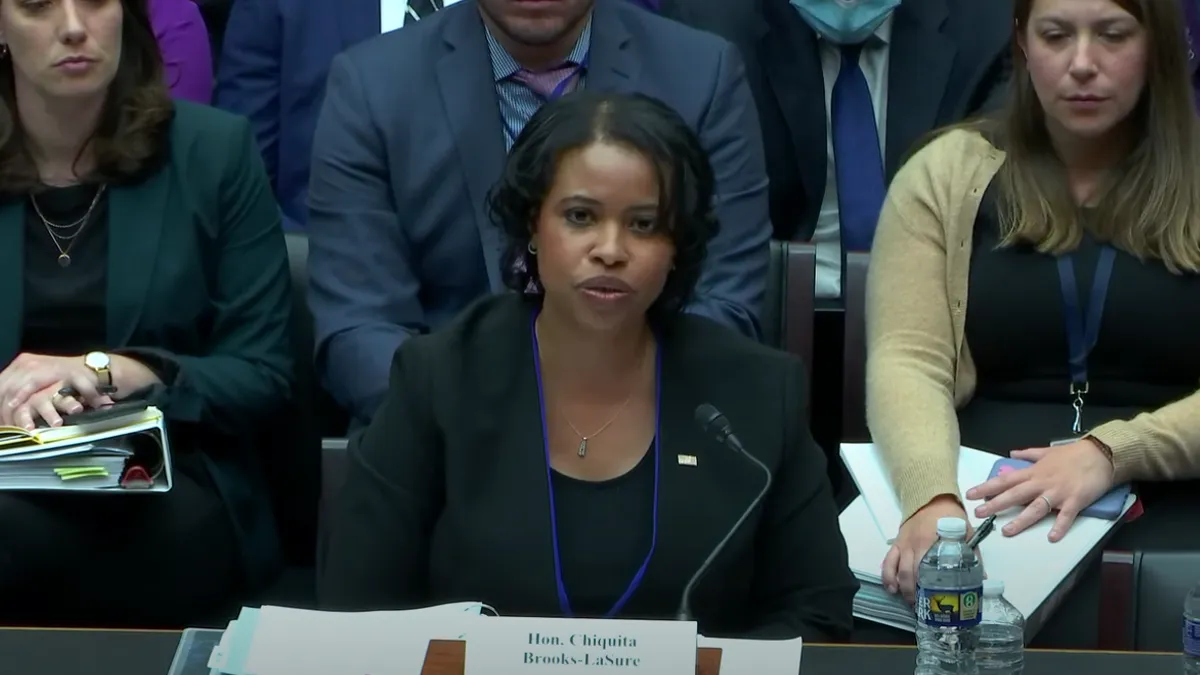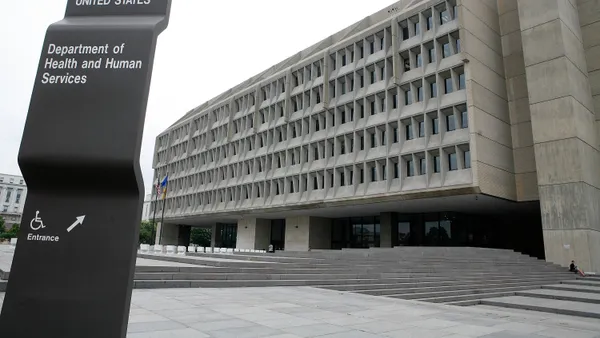With federal healthcare politics deadlocked, two states are inching closer to making universal coverage a reality.
Last year, California and Oregon legislatures passed laws setting deadlines for developing publicly financed, universal healthcare coverage systems. Proponents of the laws say the systems could save billions in healthcare costs and improve access, while opponents argue they would disrupt care and could increase costs.
Both bills represent incremental steps toward creating state systems similar to Medicare for All, the universal government health insurance program popularized by Sen. Bernie Sanders’ 2016 and 2020 presidential primary campaigns.
Medicare for All is a version of single-payer healthcare under which the government would cover everyone with an expansive benefit package and minimal cost-sharing. By contrast, the Affordable Care Act relies on voluntary consumer purchase of private insurance.
Success of the state laws ultimately depends on a White House and federal government willing to agree to healthcare policy proposals that go farther than those approved by the federal government to date, experts told Healthcare Dive.
The next steps for both states lead directly back to Washington, where these local policy proposals could reignite the dormant debate over national healthcare coverage.
State bills require federal support
Both laws set up state governance systems to implement universal coverage, but they also require approval from the federal government.
Oregon’s restructuring proposals are more fully developed than its neighbor to the south. Oregon’s Senate Bill 1089 gives a nine-member Universal Health Plan Governance Board two years to develop a plan to implement a single-payer proposal recommended by an earlier Joint Task Force on Universal Health Care. The proposal would eliminate private risk-bearing insurance and cover all residents with a comprehensive benefit package. Oregon will seek what it calls “groundbreaking waivers” from the federal government that allow the state far more flexibility to administer Medicaid and Medicare funds than what Washington has allowed in past state experiments.
California’s SB 770 also instructs the state government to negotiate federal waivers to allow the state to combine Medicare, Medicaid and state money, but the funds would be used for a more vaguely defined “unified financing” system.
California Gov. Gavin Newsom ran on single-payer in 2018, but the legislature declined to pass it, instead establishing the Healthy California for All Commission in 2019 to make recommendations for a future system to cover everyone with comprehensive benefits.
The state’s commission split on whether to make payments through private insurers and how to pay providers. In a preliminary report, commission researchers reported that “more than 60% of Californians covered by health insurance are enrolled in an HMO.” Some commissioners felt getting rid of third-party intermediaries was impractical and made payment reform impossible, while single-payer supporters believed allowing private contractors to accept insurance risk creates incentives for them to deny needed care, according to the HCFA’s final April 2022 report.
Newsom signed Senate Bill 770 into law last October. Following the commission’s lead, it calls for a unified financing system to pay for a broad benefit package for all state residents, while eliminating the distinctions between Medicare, Medicaid, ACA and employer-sponsored coverage. However, it leaves open big questions about the structure of a major overhaul, including the future role — if any — of private insurers.
The bill sets a deadline in 2025 for California to develop a “waiver framework” through informal negotiations with the federal government to allow the state to merge federal insurance programs into a single funding stream. However, applications for federal waivers must include detailed descriptions of proposed reforms, so in less than two years, the Newsom administration will have to present California lawmakers with a formal waiver application to the federal government for a universal coverage plan that answers some of the hard questions avoided by SB 770.
With or without private insurers, merging federal health insurance programs into a single unified financing system requires federal approval, either by Congress or waivers from the executive branch for multiple federal laws.
Congress hasn’t elected to expand health coverage since the ACA. Soon, California and Oregon could be asking the government for approval to do what hasn’t been done before.
States seeking cost savings
Proponents of the bills in both states — including labor unions, progressive physician organizations and healthcare consumer NGOs — say universal coverage is critical to solving high U.S. healthcare costs.
According to data from the Organization of Economic Cooperation and Development, total U.S. healthcare costs per person remain twice the average of other wealthy nations.
On a state level, the California Healthcare Foundation’s 2023 annual survey found that 52% of Californians skipped needed care due to costs, and 50% of people who skipped care said their condition worsened.
In its final April 2022 report, the California commission said unified financing would fund full coverage and still reduce the state’s projected $517 billion in costs over the next decade by controlling prices for hospitals, physicians and drugs, and capturing savings from reducing excess administrative costs common to the current healthcare system. The analysis is consistent with most studies of single-payer, including a 2020 analysis of federal options by the Congressional Budget Office.
State Sen. Scott Wiener said the impact of high health costs on California’s labor market prompted him to author SB 770.
“I’ve seen this ridiculous system where access to health care is tied to a job,” said Wiener. “If someone’s thinking of taking a job, instead of thinking, ‘What’s the salary, will it be rewarding, is it a step up in my career and skill development?’ they also have to think about, ‘Will I have health insurance?’”
In Oregon, constituents like nursery owner Ben Verhoeven hope universal healthcare will bring down high health costs for his business. In the past year, Verhoeven spent $196,000 to cover the full premium cost of individual coverage for the 26 year-round employees at Peoria Gardens, his family’s wholesale greenhouse and nursery.
Even so, the plan’s $2,000 deductible leaves employees with out-of-pocket costs. A few years ago, Verhoeven’s daughter broke both arms climbing a tree. In the process, Verhoeven got a $2,000 medical bill in the mail.
“I care about my employees and want them to be healthy, but I don’t want to be spending a lot of my time trying to figure out the healthcare business,” Verhoeven said. “My job is to grow plants, not navigate health insurance.”
Insurers, hospitals line up against bills
Major health insurers and hospital systems in both states have pushed back on universal coverage.
The California Association of Health Plans — a trade group representing 47 plans — criticized the state’s commission for using flawed data to calculate projected cost savings.
In comments submitted to the California commission, CAHP said the state’s projected cost savings hinged on a number of assumptions that “simply don’t square with reality or come with severe but glossed-over trade-offs for access to health care.” If inaccurate, those assumptions could “leave taxpayers on the hook for hundreds of billions of dollars,” CAHP wrote.
Other groups — including the California Chamber of Commerce and America’s Physician Groups — have opposed the law. The groups joined CAHP in an opposition letter sent to the state’s Senate Health Committee last year, which said that a single-payer system in California would cost over $500 billion per year in public spending and require tax increases.
California’s largest health plan and hospital owner, Kaiser Permanente, opposes single-payer. In an internal email obtained by Healthcare Dive, Kaiser called it costly, disruptive and detrimental to Kaiser and its members.
The email described SB 770 as a “modest proposal” to explore the federal steps necessary for single-payer.
“While this bill was not ideal, it could help answer some important questions about whether the federal government fundamentally would or could ever take some of the quite radical actions likely needed to move single-payer forward in California,” the email said.
Insurers and health systems, including Kaiser, have also pushed back against universal coverage in Oregon.
State health insurers said in written testimony sent to the Oregon legislature that single-payer envisioned by SB 1089 “attempts to do too much, ignores the significant legal and financial challenges, and has no precedent of success by any individual state in the Union.”
The Oregon Hospital Association did not weigh in, but the state’s two largest hospital owners, Providence Health and Kaiser Permanente, which also operate health plans, signed the testimony.
While health plans and the largest hospital systems have opposed the laws, there has been silence in other corners. Notably the states’ American Medical Association chapters neither supported nor opposed the bills.
The Oregon Medical Association confirmed to Healthcare Dive that it took a neutral position on SB 1089. Nationally, membership of the AMA — the nation’s largest physician organization with 270,000 members — has been divided over single-payer policies.
The California Hospital Association, a trade association representing more than 400 hospitals, told Healthcare Dive it “didn’t take a position on SB 770.”
California’s largest nurses union, longtime sponsors of single-payer, opposed SB 770 as an unnecessary half measure. In a letter to Newsom, Carmen Comsti, lead regulatory policy specialist for the California Nurses Association, said the bill is dangerous because it avoided endorsing single-payer. The vague unified financing term “may include a multi-payer system of health insurance, which falls far short of single-payer.”
A narrow path forward
Both California and Oregon would prefer to implement broad reforms without needing any approval from a deadlocked Congress.
Various federal laws allow the HHS and Treasury Department to waive Medicare, Medicaid and ACA laws to expand coverage, control costs or improve quality in individual states.
Medicaid, for example, allows states to establish themselves as the sole Medicaid managed provider for the state, which receives a capitated payment per enrollee. Vermont currently operates such a system, and the California Commission’s outside counsel — attorneys Caroline Brown, Phil Peisch and Julia Seidenberg of Brown and Peisch — argued in a legal appendix to the commission’s final report that the structure could pass federal muster for unified financing.
However, folding Medicare into a state system is more legally and administratively complex than Medicaid. Seniors and disabled adults have an individual federal entitlement to Medicare benefits, which are administered without a direct state government role.
The HHS can allow states to develop payment and service delivery models that reduce costs or enhance quality.
Brown and Peisch advised the California Commission that the best legal avenue for states to roll Medicare funds into a unified financing or single-payer system would be to create an entity that could act either as a state-wide Accountable Care Organization, the state’s exclusive Medicare Advantage provider, or both — similar to the Medicaid structure. However, in their memo for the commission, the lawyers cautioned that such a move “would be unprecedented and politically charged.”
Even innocuous-seeming federal rules can be obstacles, according to Anthony Wright, a HCFA commissioner and executive director of the California NGO Health Access. Although waiver rules for ACA subsidy funding are the most flexible of the federal laws, states may violate current rules requiring budget neutrality if a proposal simply gets more people who are eligible to enroll in ACA coverage.
“Relatively small reforms are being stymied” because states won’t waste time applying for them, Wright said, and there are many similar hurdles to unified financing.
To complicate matters further, the federal law governing employer-sponsored health insurance, the Employees Retirement Income Security Act, includes a pre-emption clause that prohibits nearly all state regulation of self-insured health plans.
Professors Elizabeth McCuskey, of Boston University, and Erin Fuse Brown, of Georgia State College of Law, reviewed ERISA’s impact on 66 state single-payer proposals for the University of Pennsylvania Law Review in 2020, and concluded that ERISA was a “trap” that “threatens to thwart [states’] transformative experiments” in healthcare reform.
But hope may remain for Oregon’s healthcare plans.
As consultants to Oregon’s task force, McCuskey and Fuse Brown found the state’s proposal is “likely to survive ERISA challenges.” The proposal relies on economic incentives for employers to have workers receive benefits from the state rather than an outright prohibition. However, an unfettered multi-payer approach sacrifices potential administrative savings, so the lawyers recommend either allowing employers to reimburse the state for payments on behalf of their workers or vice versa.
Hinging on political will
According to the final California commission report, achieving the state’s goals without Congress “will depend in significant part on the current federal administration’s interest in supporting a state-based unified financing system.”
Both front-runner candidates in the 2024 presidential election, President Joe Biden and former President Donald Trump, have expressed concerns about single-payer healthcare.
The Trump administration’s head of U.S. healthcare policy — CMS head Seema Verma — cast doubt on universal reforms during a question-and-answer session after a 2018 speech at the Commonwealth Club.
“I think a lot of the analysis has shown that it’s unaffordable,” Verma said. “It doesn’t make sense for us to waste time on something that’s not going to work.”
Biden expressed similar financial concerns about federal Medicare for All during his 2020 primary contest, asking how supporters would find the money.
These issues will be simmering for the rest of the year. California’s HHS has 11 months to gather stakeholder input on the issues that weren’t addressed in SB 770 and prepare to open negotiations with the White House in Jan. 2025.
In Oregon, policymakers are optimistic that universal state coverage could become a reality soon.
Bruce Goldberg, who chaired the Oregon Task Force and was recently appointed by Gov. Tina Kotek to the new Universal Health Plan Governance Board, hopes the state is on the path to become the first to guarantee comprehensive insurance to everyone with federal support.
“You can read all the regs you like. In the end, there are regulatory paths, so it’s really more about political will,” Goldberg said. “That’s why I think it’s important to have a strong, broad grassroots coalition instead of a group of policy wonks. We all know we have a complicated, unjust system.”





















